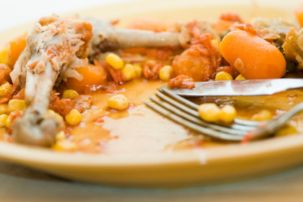Lesson summary
In this activity students weigh the different types of waste that are left over from their lunches and snacks over the course of a week. At the end of each day, students are asked to weigh their waste and record the results. At the end of the week, students add up the amounts of waste and analyse the results, making suggestions on how lunchbox waste can be reduced.
Learning intentions:
Students will...
- learn that leftover food waste and packaging makes up a large part of the solid waste produced in any school classroom
- understand that much of this waste can be recycled, added to a compost heap/worm farm or fed to the chooks/rabbits.
Lesson guides and printables
Lesson details
Curriculum mapping
Australian Curriculum content descriptions:
Year 3 Mathematics:
- Recognise and explain the connection between addition and subtraction (ACMNA054)
- Measure, order and compare objects using familiar metric units of length, mass and capacity (ACMMG061)
Year 3 Science:
- Safely use appropriate materials, tools or equipment to make and record observations, using formal measurements and digital technologies as appropriate (ACSIS055)
- Compare results with predictions, suggesting possible reasons for findings (ACSIS215)
Year 4 Mathematics:
- Use scaled instruments to measure and compare lengths, masses, capacities and temperatures (ACMMG084)
Year 4 Science:
- Use a range of methods including tables and simple column graphs to represent data and to identify patterns and trends (ACSIS068)
- Compare results with predictions, suggesting possible reasons for findings (ACSIS216)
Year 4 Geography:
- The use and management of natural resources and waste, and the different views on how to do this sustainably (ACHASSK090)
Syllabus outcomes: GE2-3, ST2-4WS, MA2-11MG, MA2-12MG, MA2-9MG, MA2‑1WM, MA2‑2WM, MA2‑3WM, MA2‑5NA.
Resources required
- Scales
- Five buckets
- Rubber gloves
Additional info
This is an original Cool.org lesson. Facts and figures in these lessons may have changed since this lesson was published. We always endeavour to update our resources in a timely manner, but if you see an error or issue in our resources please get in touch with us.


Welcome back!
Don't have an account yet?
Log in with:
By signing up to Cool.org you consent and agree to Cool's privacy policy to
store, manage and process your personal information. To read more, please see
our privacy policy here(Opens in new tab).
Create your free Cool.org account.
Many of our resources are free, with an option to upgrade to Cool+ for premium content.
Already have an account?
Sign up with:
By signing up to Cool.org you consent and agree to Cool's privacy policy to
store, manage and process your personal information. To read more, please see
our privacy policy here(Opens in new tab).